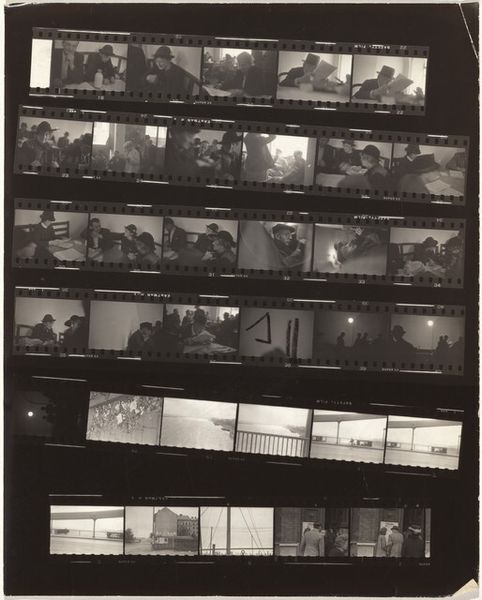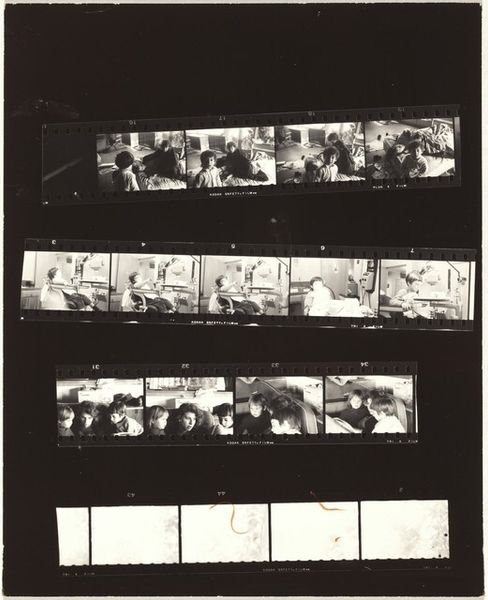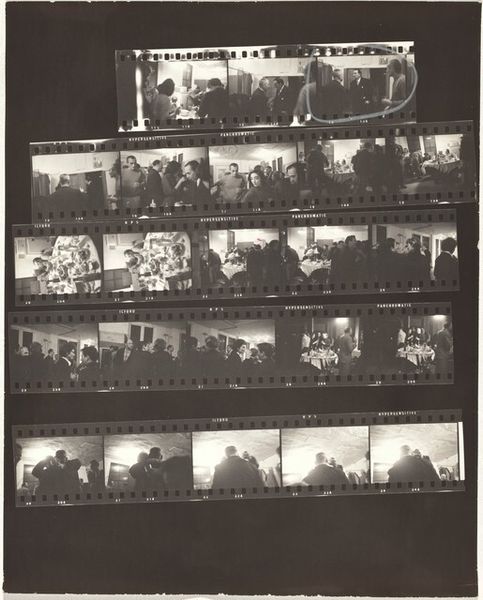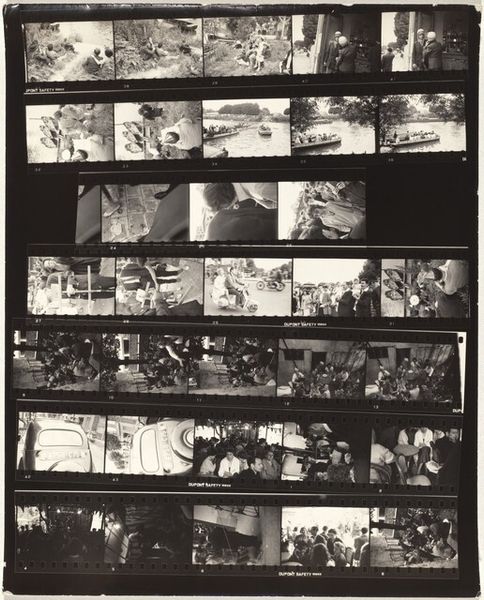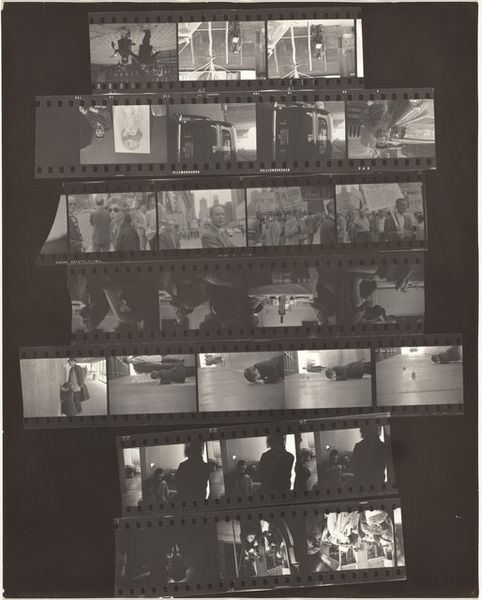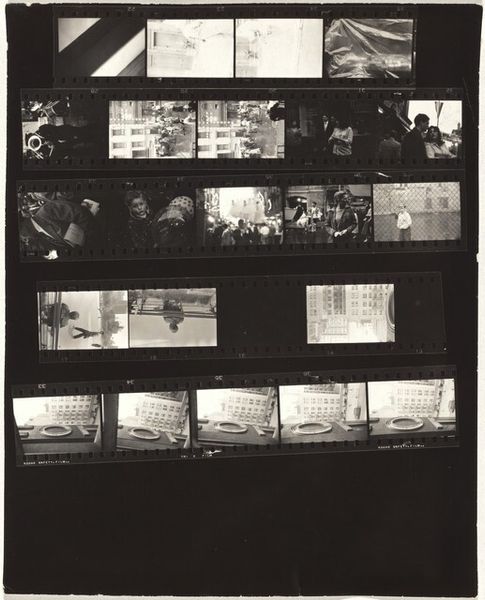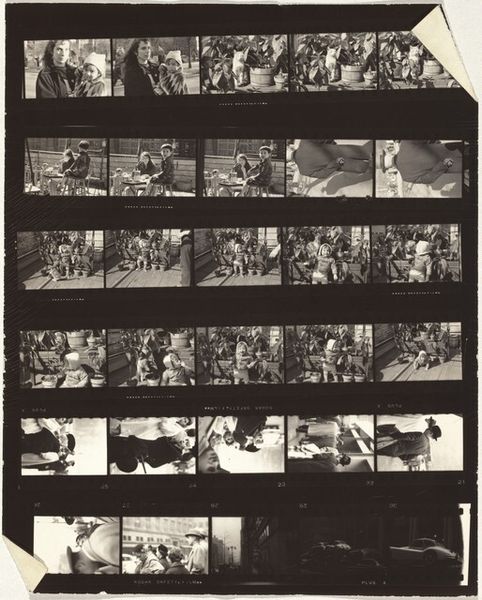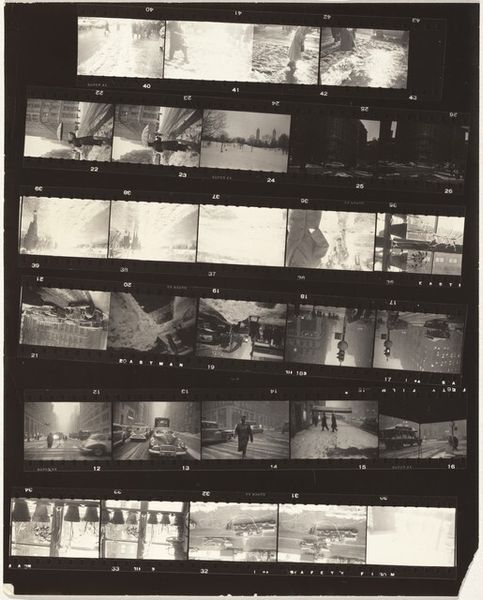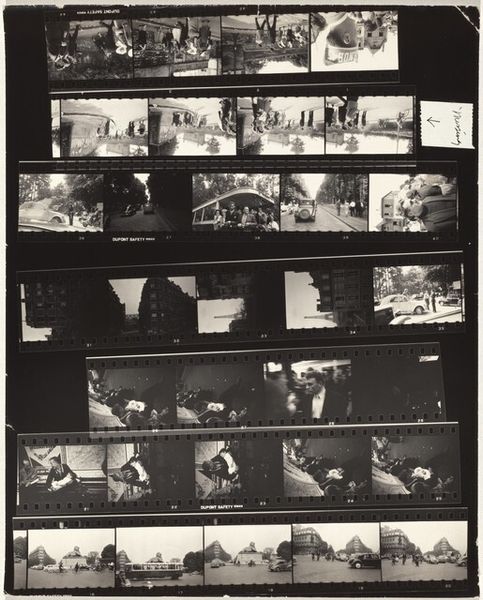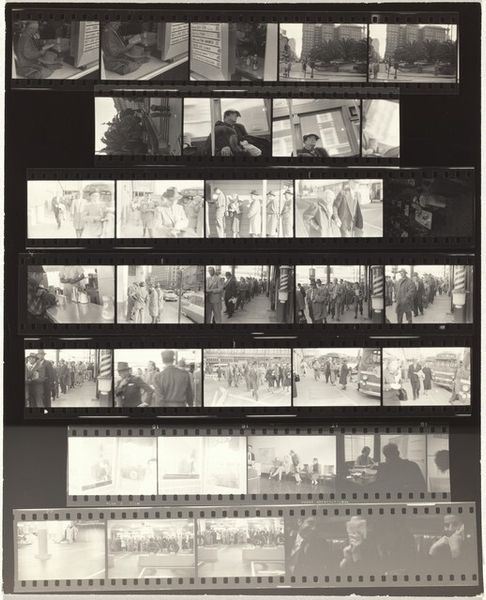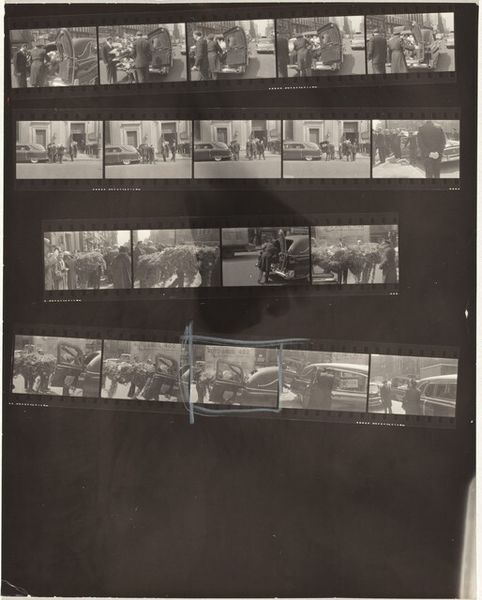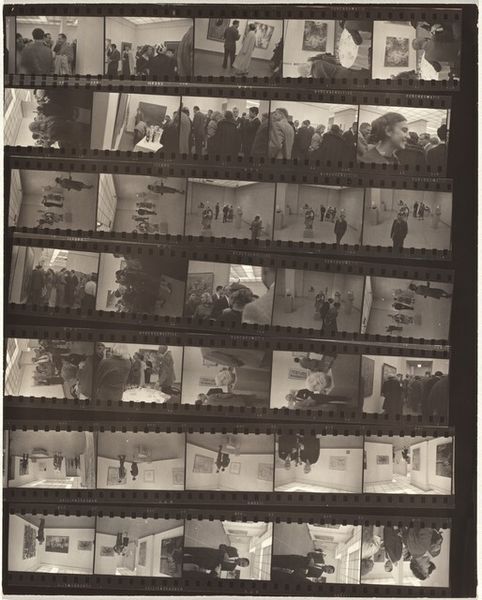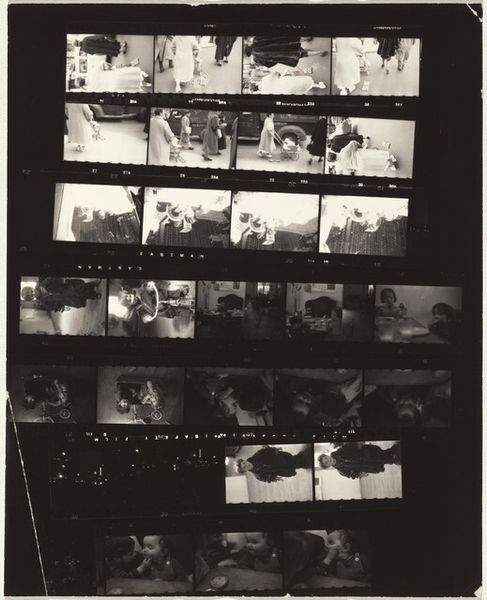
#
excavation photography
#
wedding photograph
#
black and white photography
#
wedding promotion
#
wedding photography
#
black and white format
#
warm monochrome
#
wedding around the world
#
monochrome photography
#
monochrome
Dimensions: overall: 25.2 x 20.2 cm (9 15/16 x 7 15/16 in.)
Copyright: National Gallery of Art: CC0 1.0
Editor: This is Robert Frank's "On board ship--Paris 30," taken in 1959. It’s a contact sheet of black and white photos, raw and unfiltered. The whole thing has a slightly unsettling feel, almost voyeuristic, which is only heightened by the nature of a series of photographs. What strikes you when you look at this work? Curator: That sense of unease is palpable. I see a reflection of the post-war existential angst. Frank was documenting not just what he saw, but the undercurrents of American society and by extension western society after the war. This being “on board ship”, it's literally a journey to Europe, so this uneasiness to me is representative of both this geographical journey but the beginning of modern travel as we understand it today. Consider the date, 1959, a decade after the end of World War Two and you’re beginning to see mass transatlantic travel in the post-war period. How does that add to the emotional effect of this work, do you think? Editor: That's a good point, the ship could be a vessel to see new opportunities abroad but one cannot escape one’s personal realities in those pictures as that history is brought to every destination? The individual shots seem like glimpses, not staged or perfect, and it contributes to the overall narrative. There's a grittiness. Curator: Exactly. Frank wasn’t interested in idealization; his subjects were often marginalized, showcasing a perspective rarely seen in mainstream media at the time. Also, his work influenced a new generation of photographers focused on showing realism through photographs that reflect their own perspectives. Do you think that approach remains relevant to artists today? Editor: Absolutely. I think artists still strive to push boundaries and represent perspectives that are underrepresented. The focus is on revealing a truth that connects to audiences on a much more real level. This has definitely given me some fresh perspective! Curator: Agreed! Analyzing the context provides depth into Frank's work and how it has continued to influence many photographers in both subject choice and perspectives.
Comments
No comments
Be the first to comment and join the conversation on the ultimate creative platform.
